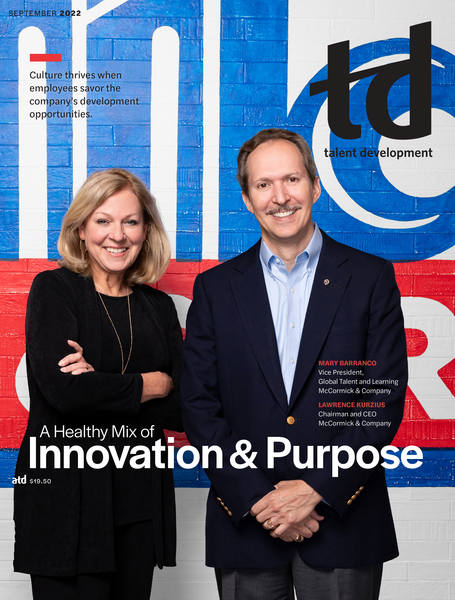TD Magazine Article
Job Well Done
Authentic employee recognition leads to engaged and committed staff.
Thu Sep 01 2022

Bookmark
Can better employee recognition efforts help employers solve their retention and recruitment problems? According to Unleashing the Human Element at Work: Transforming Workplaces Through Recognition, a new research study from Gallup and Workhuman, "Recognizing employees is a simple way organizations can demonstrate their investment and commitment to their employees and inspire them to feel connected, confident, and cared about."
Unfortunately, eight in 10 senior leaders participating in the study say recognition is not a major strategic priority for their organization. And workers are noticing the deficiency. Only 23 percent of employees strongly agree they receive the right amount of recognition for their work. Two-thirds claim the recognition feels inauthentic, and three-quarters said it's not equitable. More importantly, the data reveals that more than half of those workers are actively looking for a new job.
Gallup and Workhuman describe recognition as praising, acknowledging, or expressing gratitude to employees for who they are and what they do. It involves managers privately thanking employees and publicly acknowledging their good ideas and accomplishments. While most recognition focuses on work output and work-related achievements, it also can honor work-related milestones, such as promotions and work anniversaries.
The report notes that employers should not take a one-size-fits-all approach to recognition. Instead, leadership must create a culture of recognition where gratitude, praise, and appreciation take many forms; managers freely give it; employees are recognized at regular intervals; it is encouraged peer to peer; and it addresses individual contributors' and teams' efforts.
"When recognition is truly embedded in workplace culture, people feel its full impact—they feel seen and valued, motivated to put in a little extra, and supported to reach their full potential," says Chris French, executive vice president for Workhuman.
According to the study, when recognition matches not only workers' needs but their expectations, it can drive real impact for the business: Employees are three times as likely to feel loyal to their employer, four times as likely to be engaged, and five times as likely to see a path to grow. Additionally, in those circumstances, most surveyed employees said they are less likely to seek other job opportunities. Further analysis of the data shows that an organization of 10,000 people can save up to $16 million in turnover annually when it makes recognition an important part of its culture.
French adds that in response to distributed and hybrid work, recognition can help employers overcome engagement and retention issues, adding that "recognition is no longer a nice-to-have program, but rather a business imperative."

More from ATD



